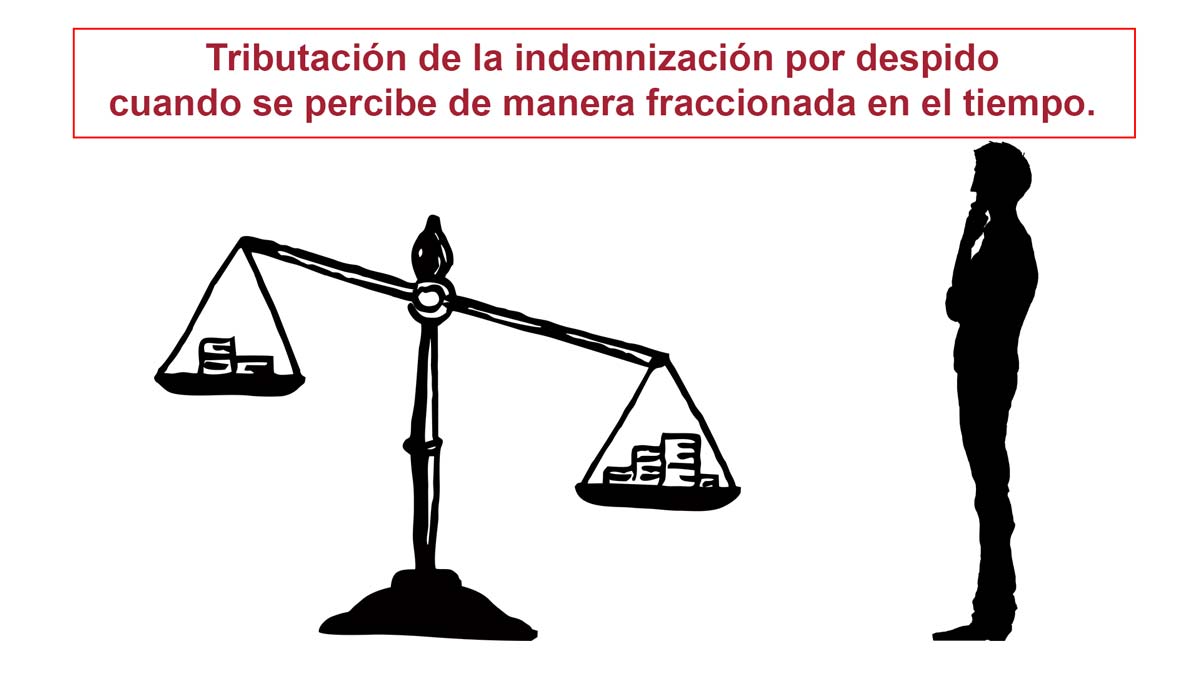In this regard, the Directorate General of Taxes issued a ruling in response to a binding consultation, number V2209-20, dated 30th June, 2020. Let us point out the most important issues:
Article 7 e) of Law 35/2006, of 28th November, on Personal Income Tax provides that the following are not subject to income taxation.
“e) Compensation for dismissal or termination of the employee, in the amount established as mandatory in the Workers’ Statute, in its implementing regulations or, where appropriate, in the regulations governing the enforcement of judgments, without being considered as such the amount established by virtue of agreement, pact or contract.
Without prejudice to the provisions of the preceding paragraph, in cases of collective dismissals carried out in accordance with the provisions of Article 51 of the Workers’ Statute, or produced by the causes provided for in letter c) of Article 52 of the aforementioned Statute, provided that, in both cases, they are due to economic, technical, organizational, production or force majeure causes, the part of the compensation received that does not exceed the limits established as mandatory in the aforementioned Statute for unfair dismissal will be exempt. The amount of the exempt indemnity referred to in this letter will have as a limit the amount of 180.000 Euros.”
From the above extract it can be concluded that the first 180.000 euros received as severance pay is exempt from personal income tax, provided it is an unfair dismissal, therefore, there must be a court decision declaring the dismissal as unfair, not just an agreement between the parties.
With regard to the excess, that amount above 180.000 euros, which could be received as compensation, this amount would be subject to and not exempt from personal income tax, being classified as income from work (and subject to withholding), but with a second very interesting benefit, we could apply a 30% reduction on this excess, provided for in Article 18.2 of the Personal Income Tax Law, which reads as follows:
“In the case of income derived from the termination of a common or special employment relationship, the number of years of service of the employee shall be considered as the generation period. In the event that this income is received in fractioned form, the computation of the generation period shall take into account the number of years of fractionation, under the terms established by regulations. These incomes will not be taken into account for the purposes of the following paragraph.
However, this reduction will not be applicable to income with a generation period of more than two years when, within the five tax periods prior to that in which they become payable, the taxpayer had obtained other income with a generation period of more than two years, to which the reduction provided for in this section had been applied.
The amount of the full income referred to in this section on which the aforementioned reduction will be applied may not exceed the amount of 300.000 euros per year.
Without prejudice to the limit provided for in the preceding paragraph, in the case of income from work whose amount is between 700.000,01 euros and 1.000.000 euros and derives from the termination of the employment relationship, ordinary or special, or the commercial relationship referred to in Article 17.2 e) of this Law, or both, the amount of income on which the reduction will be applied may not exceed the amount resulting from subtracting 300.000 euros from the difference between the amount of income and 700.000 euros.
When the amount of such income is equal to or greater than 1.000.000 euros, the amount of income on which the 30 percent reduction will be applied will be zero.
For these purposes, the total amount of earned income to be computed will be determined by the arithmetic sum of the above-mentioned earned income from the company itself or from other companies in the group of companies in which the circumstances provided for in article 42 of the Commercial Code are met, regardless of the tax period to which each income is attributed.
The conclusion to be drawn from all this is that it may be interesting for the taxpayer to collect the severance payment in a fractioned manner, so that there is no significant increase in the taxpayer’s marginal personal income tax rate by accumulating in a single tax year the amount collected from the severance payment for the part that is not exempt from taxation.
Example:
A labor relationship of 30 years in the company, a severance payment of 230.000 euros for unfair dismissal is paid to terminate that labor relationship and such dismissal will be paid in fractions over 5 years.
For the calculation of the period of generation of such income we calculate the quotient between the number of years worked in the company and the years in which the payment of the indemnity is divided, this yields a result of 6, amount higher than two, so it is considered as income obtained in a notoriously irregular way in time and being able to benefit from the reduction of 30% of article 18.2 of the LIRPF.
In this case, we have that (i) the first 180.000 euros are exempt from taxation in accordance with article 7.e) of the LIRPF, and (ii) the remaining 50.000 euros can benefit from the 30% reduction and be received in fractions at the rate of 10.000 euros per year.

 Español
Español Русский
Русский
